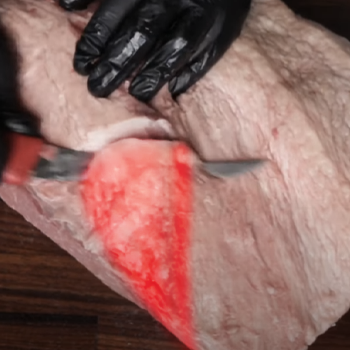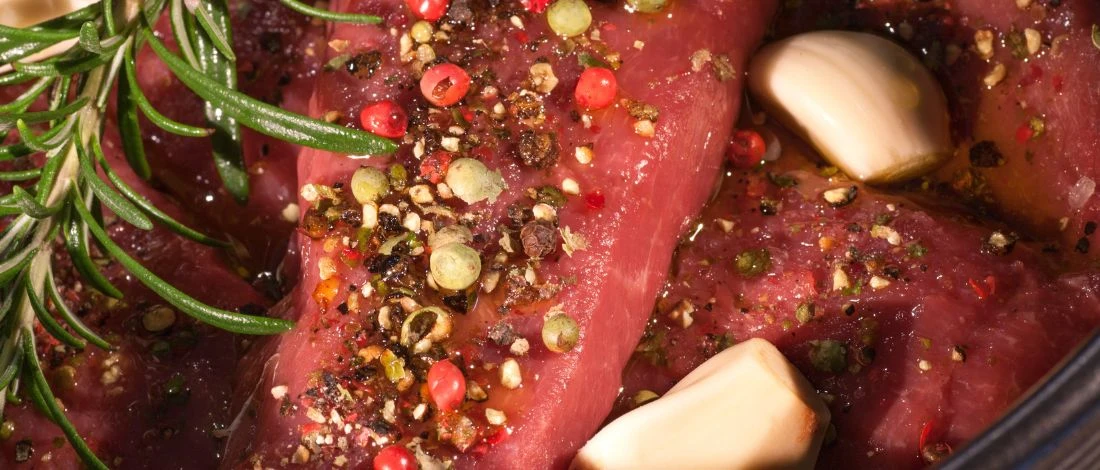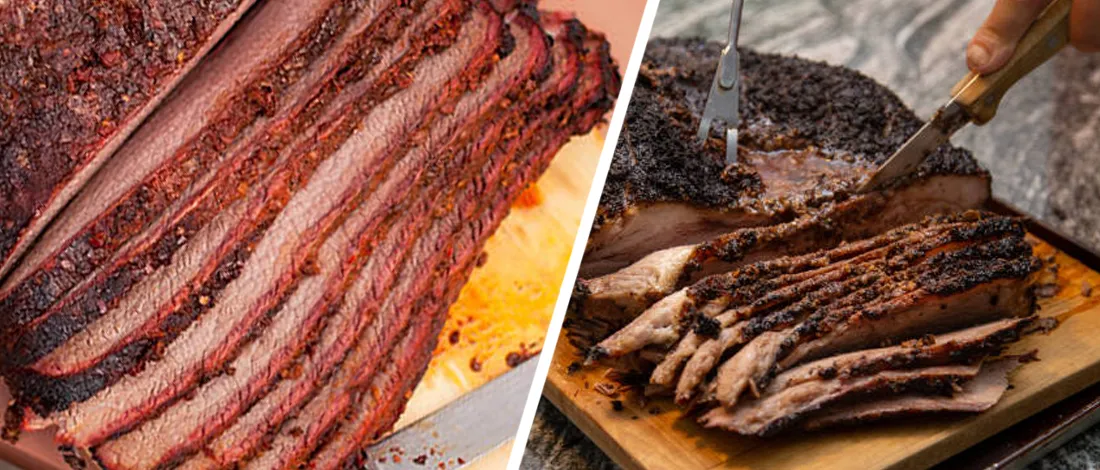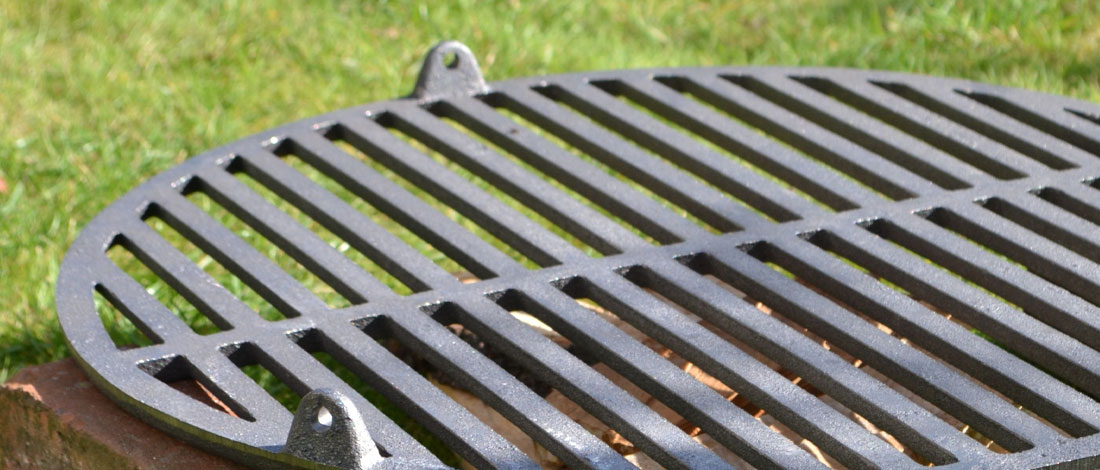Brisket is a BBQ staple for a reason. A BBQ brisket cooked right will be a mouthwatering table centerpiece.
But brisket trimming is a crucial part of the entire cooking process. If there’s too much fat seam on your brisket, the smoke won’t be able to penetrate the meat.
Also, if parts of the brisket are too thin or too thick, you’ll end up with unevenly cooked brisket meat.
I’ll admit it - I didn’t know how to trim a brisket properly on my first try. But, I didn’t give up, and I’ve spent a decade perfecting my brisket trimming skills.
Today, I’ll take you through the brisket trimming process step by step. I’ll also talk about the equipment you need for a perfectly trimmed brisket and my tips on how to trim a brisket for smoking.
Quick Summary
- Trimming a brisket is essential for even cooking, and the process involves choosing the right brisket, using proper tools, and following specific steps for cutting fat and shaping.
- The five main steps for trimming include trimming the fat cap, squaring the sides, trimming the underside fat, doing a final check, and specific adjustments if smoking the brisket.
- The 1996 study in the National Library of Medicine found that trimming beef carcasses before washing effectively reduced microbial contamination, contributing to improved microbiological quality of meat by consistently lowering bacterial populations and visible contamination scores [1].
- Proper trimming ensures that the brisket cooks evenly, retains flavor, and allows for better penetration of dry rubs and smoke, enhancing the overall taste and texture.
What Tools Do You Need for Brisket Trimming?

There are a couple of things you’ll need for a perfectly trimmed brisket, including:
- Gloves — I use nitrile gloves with a white cotton glove liner. With these gloves, you’ll feel the meat in your hands, so you can trim and grill with ease. They help grip the meat better and are easy to remove.
- Cutting board — A whole brisket is a big piece of meat, and it takes up a lot of space. You’ll need a butcher block or a wooden cutting board for a brisket so you don’t damage other surfaces. Also, you’ll be able to handle and move the meat easily on a big cutting board.
- Boning knife or a chef’s knife — Make sure you have a sharp knife, as a dull edge will just tear the fat seams, and you won’t be able to trim with precision. I don’t recommend using a paring knife, as you’ll need a long blade. You can also go for a fillet knife.
- Trash bowl — When trimming brisket, you’re supposed to be cutting too much fat, so you’ll need a bowl for offcuts.
Also Read: Best Cutting Board for Meat
How to Choose the Brisket

You have two options when it comes to buying a beef brisket: a grocery store or a local butcher’s shop.
Ideally, you want a brisket that can take the heat but isn’t too big for your cooker or BBQ. I recommend choosing brisket primal between 14 and 17 lbs.
You should choose a brisket with the same thickness throughout. If your brisket has a tapered edge, it’ll burn during a long cooking time, and you’ll have to cut it off.
Pro tip: Choose a whole brisket that has some decent marbling on it. This means there’s a good amount of fat that will leave you with a juicy brisket.
Pay attention to the color of the fat. If you want to have a moist and juicy brisket, it is better to choose white fat.
White fat means the cow was fed grains, while yellow fat means it was fed grass.
Grain-fed cows have more fat compared to grass-fed cows. More fat helps add moisture and keeps the meat softer, so if you want juicy meat, choose grain-fed cows.
If you’re unsure what to look for, go to a butcher shop. Your local butcher can help you select the best raw meat for the flavor you want.
Get the Brisket Ready

Once you’ve bought your brisket, you should keep it in the fridge until you’re ready to start trimming. A cold piece of meat is easier to work with.
If you are planning to prepare brisket, you should take it out of the package, rinse it, and let it dry the night before. If there’s any excess juice, use paper towels to clean the brisket surface.
Note: If you’ve bought your meat in a grocery store, chances are it’s wrapped in an airtight package.
You should open the package in the sink so the juices can go down the drain instead of splashing everywhere.
Make sure to dry the brisket so it doesn’t slip out of your hands.
How to Trim a Brisket: Step-by-Step Guide

Before I get into details of the brisket trimming process, you need to know what parts a packer-cut brisket has.
Know the Brisket Parts
Before you start trimming brisket, let’s talk about the brisket parts.
A full brisket has two overlapping muscles — one side is the brisket point, and the other is the brisket flat.
The long, thin, rectangular side is the brisket flat. It has less fat and marbling than the point side.
Note: You can also buy a separate flat, instead of a packer brisket. Sometimes the cap isn’t included here because butchers cut it off in the butchering process.
The point side is the muscly angular part of the brisket, and it has more fat. It connects the flat to the rib cage. This site has to be trimmed before you cook the brisket.
Note: The brisket will have parts of denser fat, which resemble leather when touched. This will never melt, and you’ll just end up with a mouthful of fat. This is why this point end fat has to be trimmed.
Now that you know the sides of the beef brisket, it’s time to start trimming brisket.
Trim the Fat Cap

Put the brisket on the board, with the fat side up. Start cutting slowly with a boning knife, and take a little bit off at a time, especially if this is your first brisket trimming.
I start with shallow cuts that are deep enough to see the meat underneath, so the filet knife is parallel with the brisket.
My first cut is long, so I can hold the fat up with the left hand while I trim with the right hand. Then I cut the fat in strips, a piece at a time.
As you cut, you’ll approach the brisket end fat. You’ll find a thick layer of hard fat here.
As I mentioned, it doesn’t cook well, so I always cut the hard fat close to the meat. Toss all the hard fat into the trash bowl.
A 2009 study in the National Library of Medicine analyzed the impact of cooking and trimming on beef brisket, revealing that cooking reduced fat content by approximately 17.9-44.4%, and further trimming of visible fatty tissue decreased fat by about 23.8-59.1%, significantly altering the nutritional profile of meat in terms of fat, fatty acids, minerals, and vitamins [2].
There’s no need to cut away all the fat when you trim a brisket. Chefs suggest leaving about a quarter-inch of fat, as when you cook or smoke brisket, this will help add more flavor.
“I’m going to take a little bit of the excess fat off, but it isn’t a huge deal. Softer type stuff will render out in the cook, so I wouldn't be too worried about it.”
-Matt, Meat Church BBQ YouTube Channel
Try to avoid cutting deep into the meat so you don’t waste the meat.
Pro tip: You should completely remove the fat on some brisket sections as it will allow the dry rub to penetrate better, and you’ll end up with a better smoke flavor.
Square the Sides
Once you’ve trimmed the fat cap, it’s time to trim the beef brisket sides.
Trim a section of the side of the brisket. Once again, go slowly and take off small chunks. You can always cut more if you need to, but you can’t put it back on again.
Once one side is done, turn it around, and cut the side that’s covered by the cap. You’ll see a large layer of fat, which you should take off.
Pro tip: Keep the edges smooth; otherwise, after your brisket cooks, it may be burnt.
Now your brisket should be in a rectangle shape.
Trim the Underside Fat

Once you’re done with the top part and the sides, it’s time to flip the brisket over. The side that previously had a fat cap included should now be at the bottom.
Use a boning knife to remove a hunk of thick fat, just like you did at the top.
Locate the thick wedge of fat that’s near the edge, and cut it off, together with the cartilage and silver skin.
If there’s a valley or a pocket left once you’ve cut everything off between the flat and point ends, that’s fine.
Note: In case the brisket includes the deckle, slice it away too.
Do a Final Check and Trim
To make sure you’re all done, flip the brisket over, so the flat end is at the top again. You can also go over the brisket with your hands to check if there’s a uniform thickness or if any edges should be cut.
Pro tip: If you love crispy food, leave the point end edge irregular. Also, if you’re cooking brisket hot and fast, remove more fat between the flat and point because the fat won’t have much time to render down.
You can also get on eye level with the brisket and look at the brisket from the sides. This way, you’ll see if and where fat needs more trimming.
It’s a good idea to check the shape of your brisket again. Flipping the brisket over can redistribute the weight, and you’ll end up losing the square shape.
Once you’re happy with your perfect brisket, it’s time to put on the dry rub, smoke it, carve brisket slices, and enjoy eating it.
You can use the excess fat side and ground it into sausages or just throw it out.
Trimming the Brisket for Smoking

Trimming brisket for low and slow cooking isn’t much different from what I’ve talked about above. The only difference is in how much fat you should leave when you cut brisket.
When you trim brisket for smoking, you can leave more surface fat that will render down while smoking. However, I’m talking about tiny differences. It doesn't mean you should go crazy and leave a ton of surface fat on a good brisket, or you’ll end up with chewy food.
Smoking the brisket is arguably the best brisket cooking method. The taste that the smoke gives to the brisket is unparalleled.
Once you’re done with the final trim, put the dry rub on the brisket, and after that, you can smoke it immediately.
The smoker's temperature should be 225 degrees so the heat can break the connective tissue. Once it reaches this temperature, put the meat on the smoker, fat side up.
“When we put the brisket on the grill, we go with the fat cap down because on a pellet smoker, there’s a deflector plate underneath that’s going to radiate heat, and we want to protect the meat. The fat cap always goes between the meat and the heat.”
- The Dawgfatha’s BBQ YouTube Channel
Once the brisket reaches the temperature of 195 degrees, it’s done. You can also take it off the BBQ once the internal temperature is 185 degrees. The brisket temperature will increase for a while, even when you take it off the smoker.
Also, be careful not to leave it on the smoker for too long, or it’ll be overcooked. You can do a test with a fork: stick a fork in the meat, and if it twists easily, your brisket is done.
Read More:
References:
- https://pubmed.ncbi.nlm.nih.gov/31159091/
- https://pubmed.ncbi.nlm.nih.gov/22063975/








